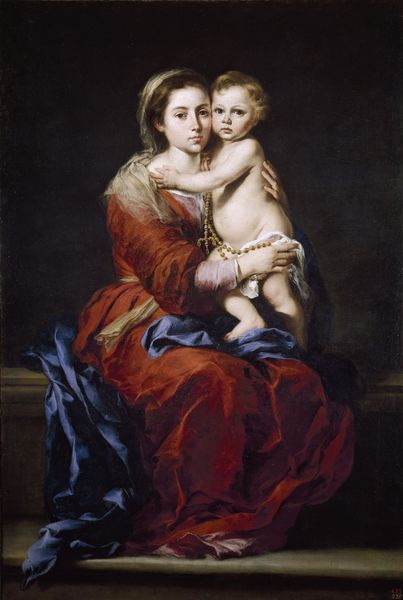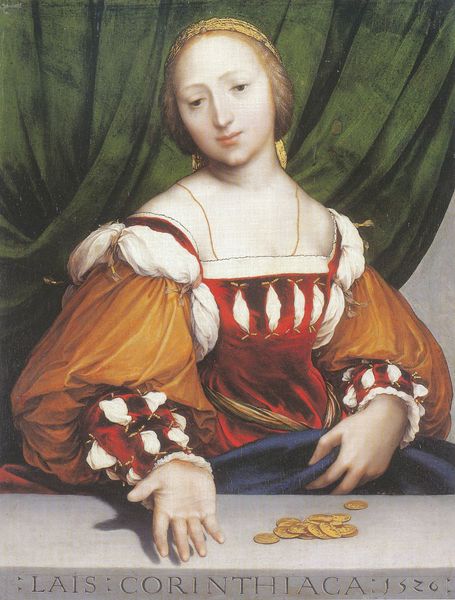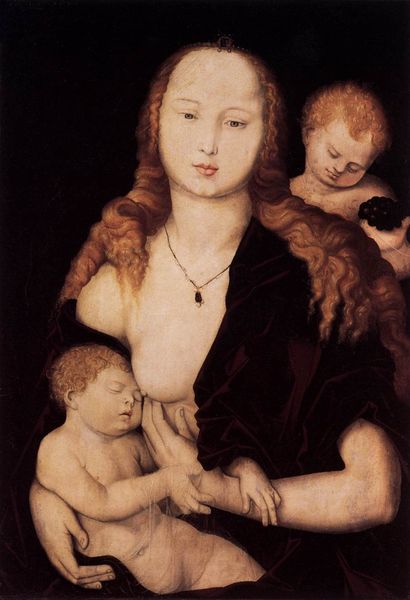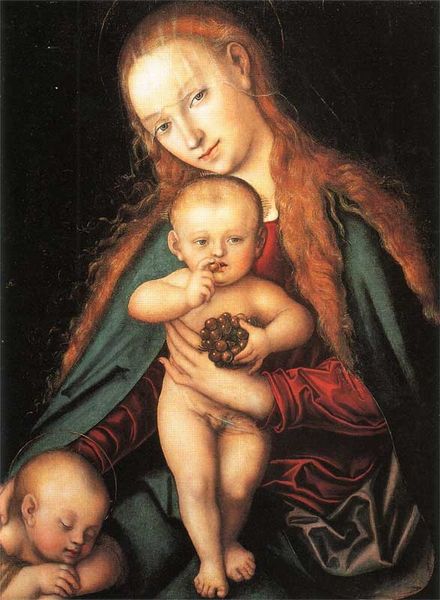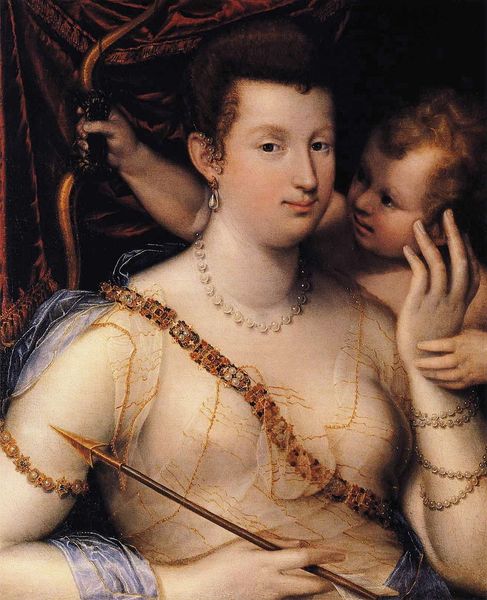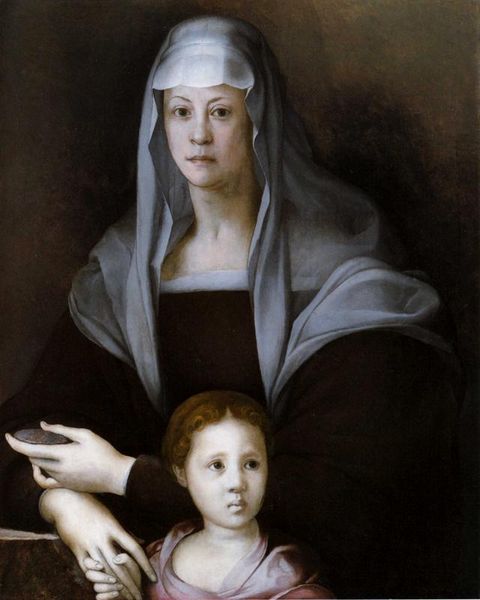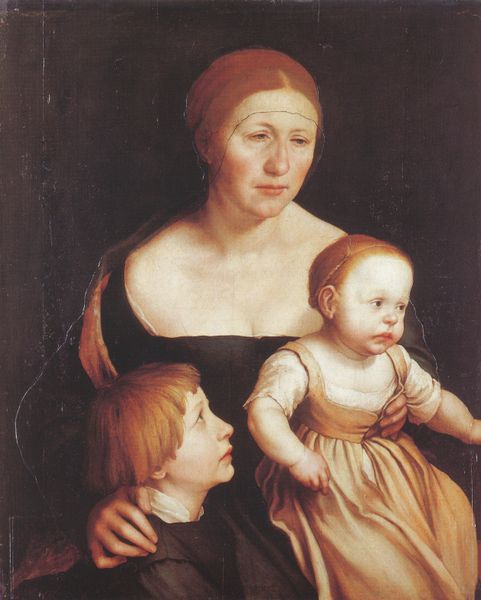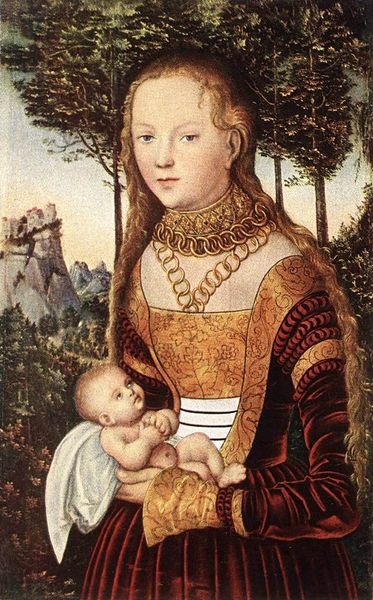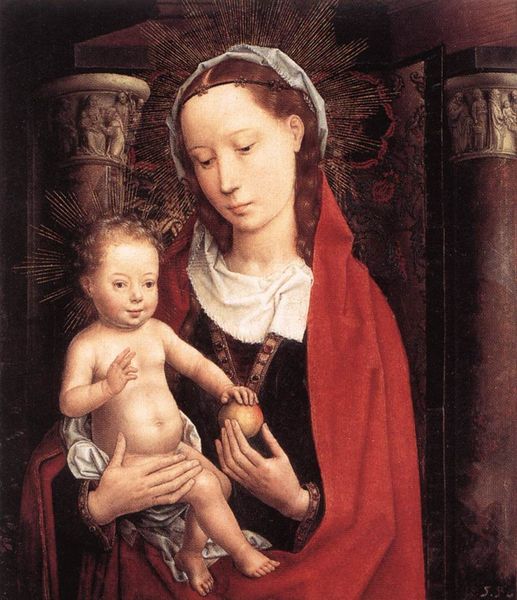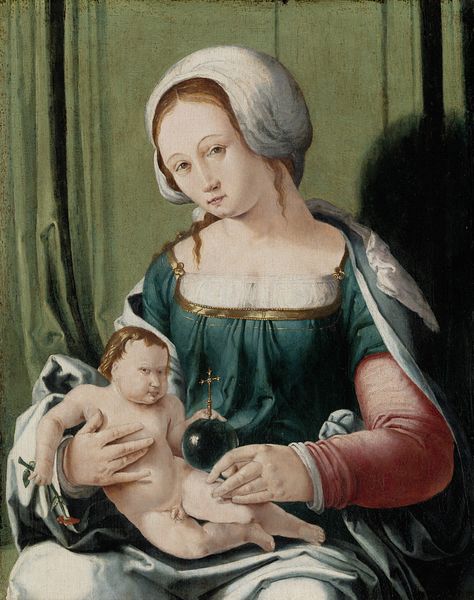
oil-paint
#
portrait
#
oil-paint
#
figuration
#
11_renaissance
#
oil painting
#
mythology
Dimensions: 34.6 x 26.2 cm
Copyright: Public domain
Curator: Hans Holbein the Younger painted this compelling piece, "Venus and Amor," around 1525. It resides here at the Kunstmuseum Basel. What strikes you immediately about this oil-painted composition? Editor: There's a peculiar stillness about it. Venus, seemingly trapped by that heavy green drapery in the background. And the frankly odd proportions, the lighting across both figures feels so deliberately flattened. Curator: Note the way Holbein deploys color, however. The vermillion of Venus’s dress creates a powerful chromatic unity. Her gaze intersects our own with arresting directness, despite the two-dimensionality that, as you rightly point out, flattens the whole composition. Editor: Interesting. For me, it speaks to the transition in attitudes toward classical mythology at the time. Here is Venus, divine love incarnate, depicted almost as a sturdy hausfrau. This work isn't about courtly romance, or high ideals, so what's its social function then? Curator: It's an unusual portrayal of the mythological figure, and the stark presentation of Venus certainly contrasts to prior Renaissance works depicting Venus rising triumphantly from the sea. This painting makes a break from idealized proportions. Consider the textures, how the meticulous application of paint emphasizes fabric folds, and how that meticulous quality serves to underscore the figures and to invite a reading into the work. Editor: What about the cupid figure, though? With his ruddy complexion, he is barely clinging onto godhood. Is the cupid’s physical state suggesting that courtly love itself, a value of the ruling classes, is declining in health, mirroring the emerging shifts of power towards mercantile elites in places such as Holbein's Basel? Curator: One can see it as an examination of forms in which love assumes certain visages. Observe also the gesture of her left hand, the way it appears to present a non-space of presentation in this flattened plane, making a formal question about the nature of viewing a canvas. Editor: Perhaps that gesture mirrors Basel society's evolving relationship with established authority. Venus, now seemingly devoid of overt eroticism, still exudes a certain controlled power, perhaps suggesting new modes for how those with access to power may act, namely with careful composure. Curator: Indeed. "Venus and Amor" embodies formal ambivalence with a historical reading as one possible lens that further contributes to such interpretations. Editor: Holbein delivers a picture where social history may well have altered conventional presentation for Venus.
Comments
No comments
Be the first to comment and join the conversation on the ultimate creative platform.

